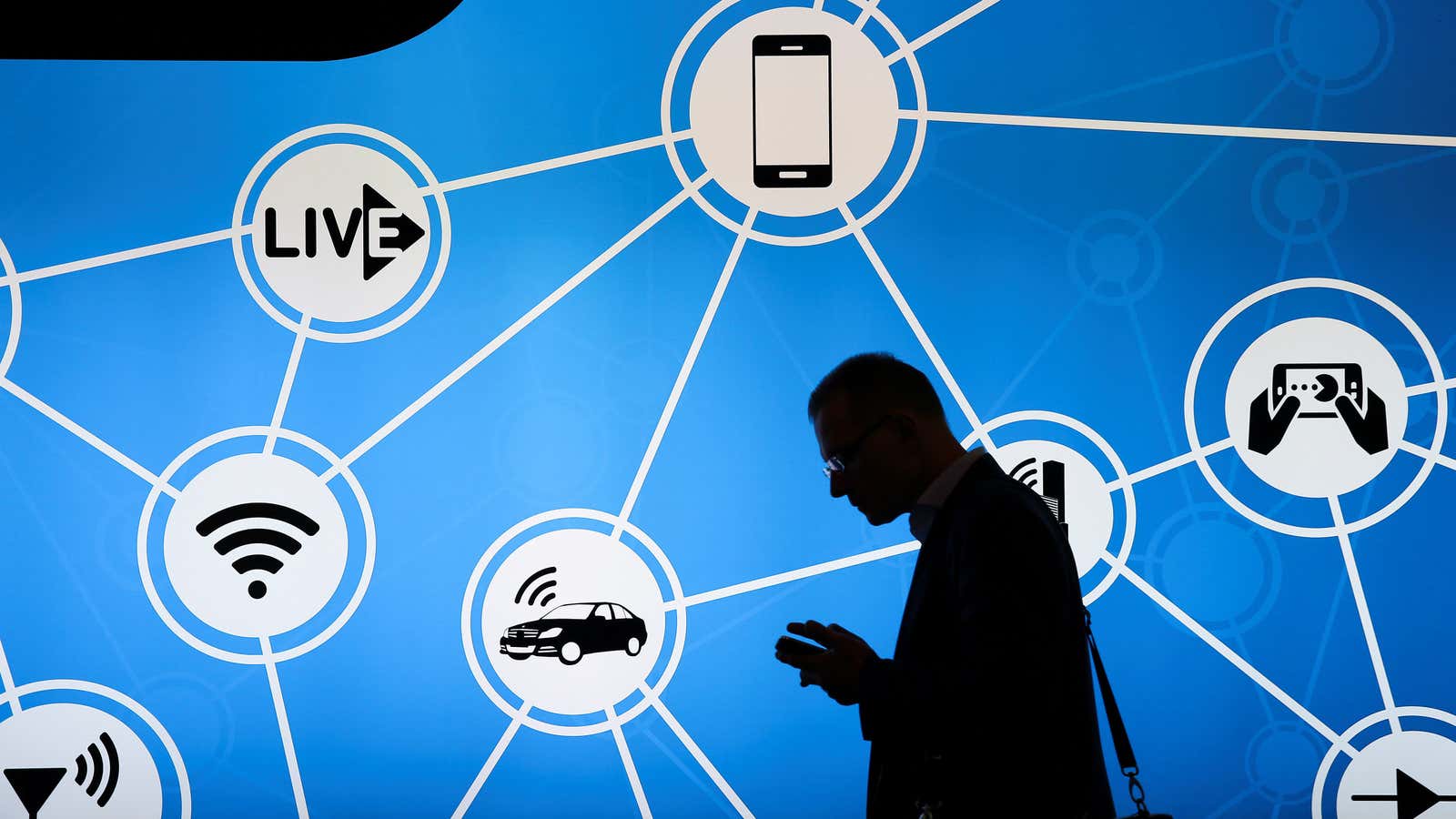Barcelona, Spain
Telcos have seen their revenues eaten away for years by “over-the-top” players—internet applications like Skype or Facebook Messenger that let users send messages and make calls online for free. Now telcos are showing signs of exploring the very revenue stream that made their internet brethren fat with profits: selling advertising.
First, it’s important to understand how dire things are for the telcos. One analysis by research firm Ovum forecasts that telcos will lose 36% of their revenue to over-the-top services over the next decade. And that’s on top of losing hundreds of billions (yes, billions) in revenue from phone calls and text messages since 2012, Ovum has found. “The future isn’t bright anymore for any of the telcos,” says Jonathan Oliver, global chief creative officer at Unlockd, a startup that sells ad tech to telcos.
Thus the turn to advertising as a revenue stream. Verizon’s acquisition of Yahoo—still on despite the hacking scandals Yahoo has suffered—is emblematic of the shift. Martin Sorrell, head of advertising agency group WPP, has called the acquisition “a third force” (paywall) against a Google and Facebook duopoly on digital ads. At this year’s Mobile World Congress, a four-day industry gathering in Barcelona, executives like Telefonica’s global advertising director, Daniel Rosen, and O2 boss Mark Evans echoed the idea.
But telcos are wading in with some trepidation. People don’t want to see more ads, after all. At last year’s congress, a startup named Shine caused a stir with a declaration that it would help carriers block ads at the network level, meaning they would never even get delivered to your phone. This year Shine has rebranded itself Rainbow, and repositioned itself as a “creative verification” service for ads, meaning it’ll work with its carrier partner, Three in the UK, to check if an ad is particularly intrusive, and charge advertisers for analytics and other services.
The quest for stronger click-through rates
Models like Shine’s are part of a trend toward “opt-in” mobile advertising that telcos seem to favor. Another startup taking this tack is Unlockd, an app that sometimes shows users an ad when they unlock their smartphones. In return for watching the ad they get special offers such as money off a phone bill. Unlockd white-labels the app to telcos, such as the UK’s Tesco Mobile; they brand it, get third-party ads on the app, and entice their subscribers to download it to get the discounts.
“As long as the ads are not annoying and disruptive, then everybody wins,” says Oliver of Unlockd. The users get the special offers, and telcos, notoriously disconnected from their customers, build up loyalty and have more chance of preventing users from hopping to a competitor when their contracts are up.
Unlockd shows an ad once every three times a phone is unlocked, Oliver says. He claims that 4% of users click on ads in the version used by Boost, a US carrier. Most online display ads, by contrast, have click-through rates of only a fraction of 1%. Oliver attributes the stronger rate to the fact that his ads take up the whole screen, as opposed to small banners displayed in a browser or app.
More importantly, that unlock screen is the first thing that users see—before they can log into Facebook or punch in a Google search. “For the telcos, advertising is new for them, so everyone’s building a service,” Oliver says. “We’re monetizing in a different way … You’re getting in front of anyone clicking through to Facebook or Google.”
